
views
Things to Know

Know where to hold your hands. Most ASL signs are produced in a space that extends from your temples to your waist. Many signs are in a 'neutral' position, at mid-chest level. Location and palm orientation matter! When learning signs, pay careful attention to where the hands are located, and which direction the palms face. This affects the meaning of the sign produced. Comfort is important. Arthritis and tendonitis will prevent some from being able to form signs perfectly. If it hurts, adjust your position slightly. Be aware that ASL is not a language only of the hands and fingers. It involves the whole body, including the upper torso, arms, and head. The face is extremely important! Facial expressions can communicate a variety of things. For example, elevated eyebrows when signing means one is asking a question.

Take your time. As you are learning, move in a slow, deliberate fashion. This will help you master the motions as well as make it easier for others to understand you.

Learn to fingerspell the ASL alphabet. Fingerspelling is used often in American Sign Language, especially for proper nouns. It is also essential for spelling out words you don't know the sign for. Check out this guide for details on how to fingerspell each letter of the alphabet.

Practice the sign for "hello." This sign is universally used to greet someone. It is very similar to a wave. Bring your right hand up to your forehead, with your palm facing out. Move your palm away from your body in a wave motion.

Practice the sign for "goodbye." The way you say goodbye in ASL is dependent on the situation and formality required. More casual ways to say goodbye include a simple wave of the hand, a nod, or a thumb-up. You can also sign "see you later" by pointing to your eye with your middle and index fingers in the shape of a "V", and then to the other person with your index finger.
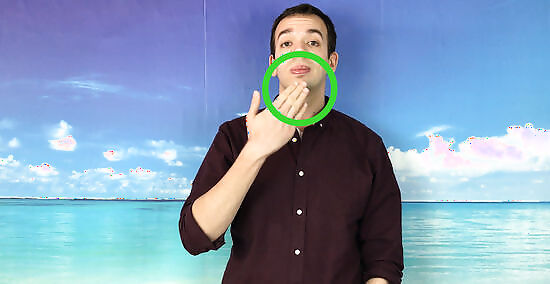
Learn the sign for "thank you." This very important sign will be especially useful for thanking your ASL practice partners. Open your right hand into a flat palm, holding your fingers together with your thumb sticking out. With your palm facing towards you and your hand facing straight up, start the motion with the tips of your fingers touching your chin. Move your hand from your chin straight forward and down in an arc. Nod as you move your hand.

Know how to ask "how are you?" This is a good casual conversation starter that is easy to learn. It is broken down into two signs: "how" and "you" with the question implied. Hold both hands at about chest level in a loose thumbs-up position with both thumbs pointed in towards your chest. Rotate both hands outwards while keeping them in the same space in front of your chest and maintaining your hand shape. Point towards to the other person with your right hand held at your upper chest. Furrow your eyebrows as you finish the phrase, which indicates a question to which you expect a response other than "yes" or "no."

Gradually add more vocabulary and phrases to your knowledge base. Knowing the alphabet is a good first step, but most signing is done with phrases, as is any other language. Slowly build your vocabulary, taking the time to master each phrase and word as you go. Consistently adding and practicing new vocabulary with others fluent in the language is the only way to become fluent, just as it is with learning any new language. Learn how to sign numbers. Knowing how to count and number things is a very useful skill to have in any language. Study how to refer to locations. This will be useful as you go to new places and sign with new people. Being able to express time, and the days of the week, will be very helpful when making plans with someone you sign with.
Ways to Learn
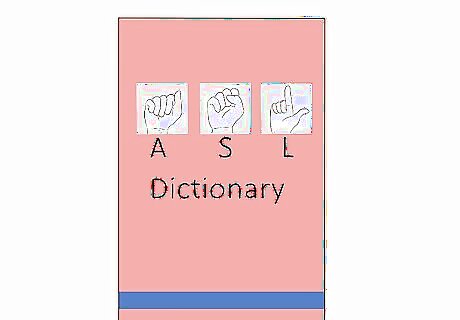
Invest in a good sign language dictionary. Dictionaries are critical tools for learning any language, and ASL is no exception. A good dictionary will allow you to look up signs you don't understand, as well as give you something to study. Look for a dictionary with easy-to-understand illustrations and descriptions. Try using an online dictionary, where you can see videos of the signs being produced.

Take a class from a deaf instructor. A classroom setting will give you multiple people to practice signing with, as well as feedback on your performance. Many colleges will allow you to take a class without enrolling. Check with your local school to see what programs they might offer. Community programs such as local libraries and recreational centers will often offer ASL classes for those that are interested.
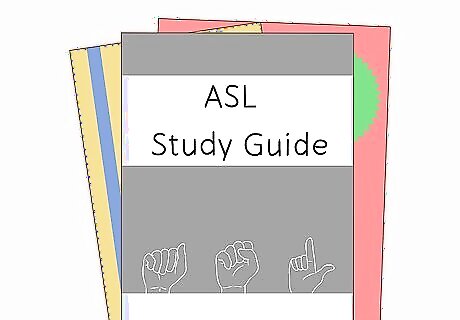
Buy a few study guides. While a dictionary will show you how to sign every word or phrase, a study guide will get you signing in a more practical fashion. A study guide will provide more instruction than a dictionary, and will help you learn basic conversations as well as sentence structure.
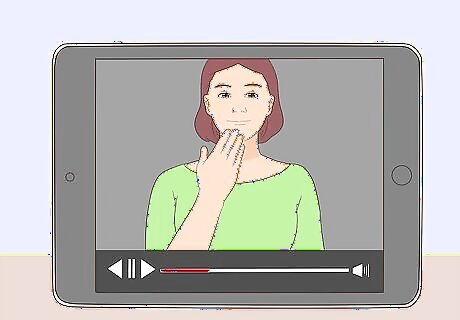
Look for resources online. The internet can provide a wealth of information about signing, how to sign, Deaf culture, and more. There are many sites that contain video tutorials posted by professional ASL instructors. The ASLU is a great resource for new learners. Each entry has a video by professional instructors. Handspeak is another good video resource and online dictionary. YouTube is host to a variety of self-published videos on signing. Just remember that with anything online, anyone can make something regardless of whether or not they actually know what they are doing. Be wary of misinformation and improper techniques.

Download an app. With the advent of smartphones, carrying a dictionary and study guide around with you has never been easier. Both the Google Play Store and the Apple App Store have multiple options to choose from, ranging from free to a few dollars. Apps can be great for quick references, and some include video along with instructions. There are study guides and dictionaries, so try out a couple until you find ones that work for you. Look for apps that have a high number of 4 & 5 star reviews. Browse through some user reviews to see how helpful the app has been for other people.
Practical Experience
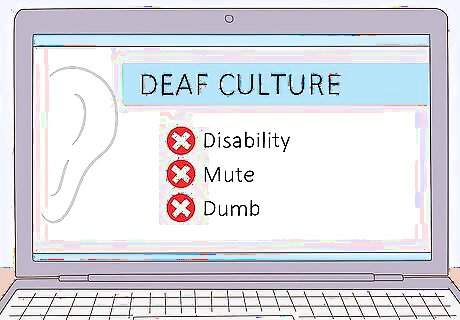
Familiarize yourself with Deaf culture. In order to become fluent in ASL, you will have to be invested in Deaf culture. Since deafness is rarely passed from parent to child, Deaf culture is one of the few cultures where a child does not learn the cultural traits from their parents. Instead, the culture evolves from deaf schools and community gatherings. Sign language is but one small aspect of Deaf culture. In Deaf culture, deafness is not viewed as a disability that needs fixing. The terms "mute" and "dumb" are culturally insensitive, and should never be used. In general, individual Deaf communities are tight-knit and initially hard to break into. But persistence and a humble attitude will help you succeed in making deaf friends. Once they know you are sincere and eager to learn about them and their language, many deaf people will begin to accept you and "show you the ropes" of their unique culture. The Deaf culture is built on strong literary traditions, especially in poetry.

Practice with a partner. You cannot learn ASL simply from reading a dictionary or watching some videos. Finding a partner to practice ASL with on a regular basis will be crucial for improving your readability, speed, and comprehension. Post a bulletin at your school asking for an ASL partner. Get a friend or family member to learn ASL with you so you both have someone to practice with in everyday situations.
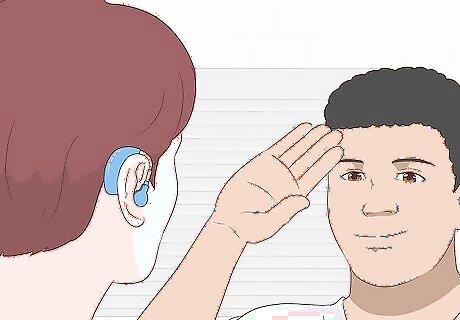
Communicate with a deaf person. The goal of learning ASL is being able to communicate fluently with someone who is deaf. Once you start feeling comfortable with basic sayings, go out of your way to interact with someone from the Deaf community. Find out what Deaf community events are happening in your area, such as art shows, movie screenings, or gatherings. Go to a Deaf Coffee Chat. They are typically (though, not always) oriented towards beginners and you are likely to find Deaf people who are happy to chat with you. Be polite and ask if someone would like to engage in a basic conversation with you.














Comments
0 comment